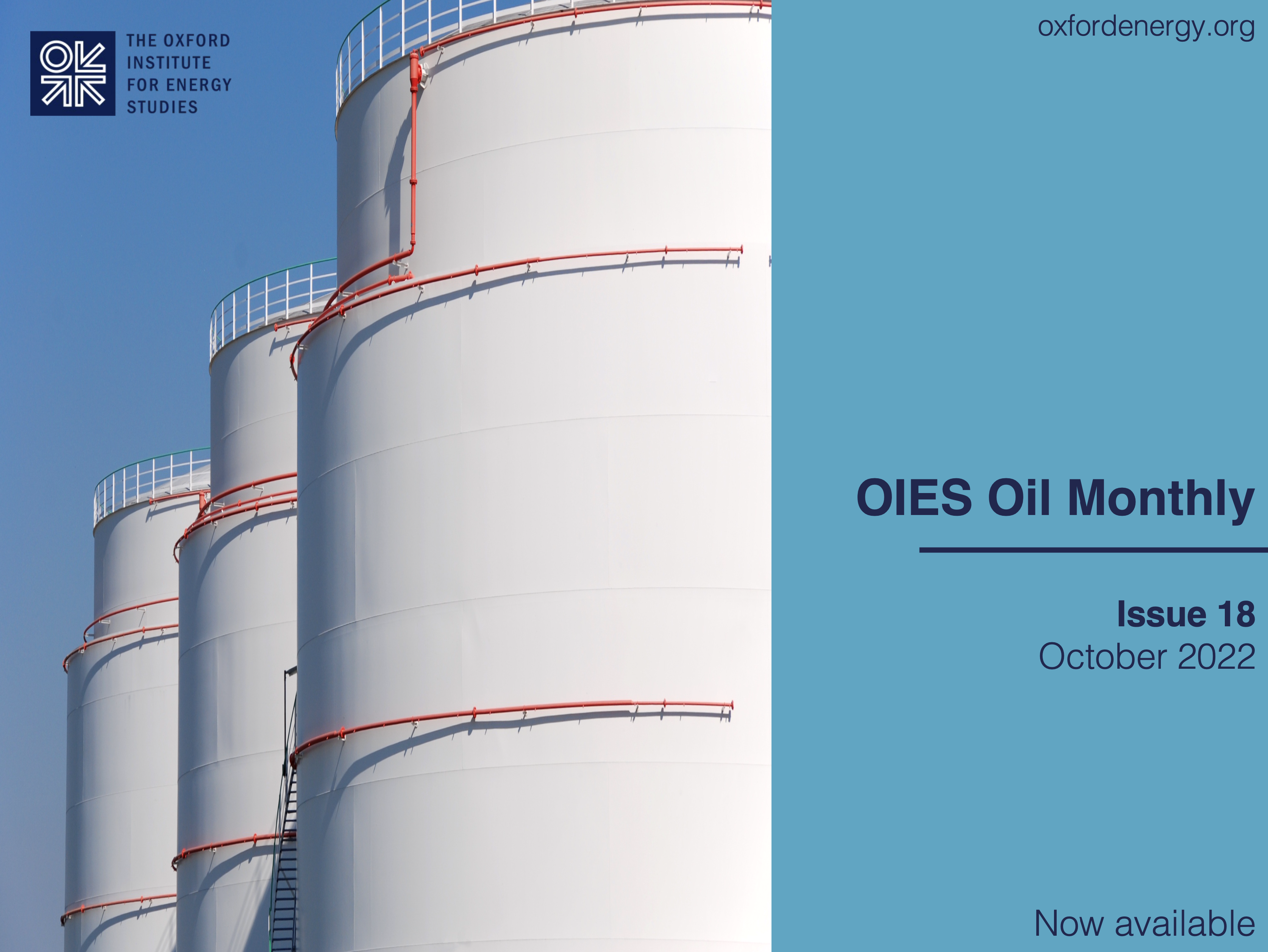OIES Oil Monthly – Issue 18
The new issue of OIES Oil Monthly, including our latest short-term oil market outlook to 2023, is now available.
– Weaker global growth prospects amid persistent inflationary pressures and monetary policy tightening coupled with a delayed recovery in Chinese demand have become the key factors influencing sentiment and driving the outlook in 2023, dominating oil supply factors and expectations of a large Russian supply disruption as the EU embargo comes into force in December.
– The resilience of Russian oil production and ability to redirect sanctioned crude have led us to narrow the range of expected disruptions in 2023. The prospects of Russian supply disruptions under our Reference case are downgraded to 1.25 mb/d from 1.5 mb/d projected last month, with Russian crude production expected to fall to 9.8 mb/d in 2023 from 10.6 mb/d in 2022.
– Global oil demand growth is downgraded to 1.8 mb/d from 2.2 mb/d in 2022 and to 1.7 mb/d from 2.1 mb/d in 2023. The largest downward revisions in 2022 are stemming from China associated with H2 and a later than previously expected end to COVID restrictions. In 2023, downgrades in OECD demand growth and further downward revisions in Chinese demand growth on a more gradual recovery as a large stimulus remains unlikely further weighing on the outlook. Risks to oil demand growth are firmly tilted to the downside as the duration and extent of the ongoing macro pressures continue to weigh on the outlook in 2023.
– Global oil supply growth is downgraded to 4.6 mb/d in 2022 from 4.8 mb/d forecast previously and to 1 mb/d in 2023 from 1.7 mb/d. In response to weakening market balances and consistent with past behavior of acting preemptively, OPEC+ announced an output cut of 2 mb/d. Given that most member countries are producing well below their quotas, the cut in ‘real’ barrels is lower ranging between 880,000 b/d and 1.2 mb/d. The downward revisions to the supply outlook were moderated by a 270,000 b/d upgrade of Russian production in 2023 and modest gains in non-OPEC growth.
– The products markets, particularly diesel, remain tight. The decline in Russian products exports to Europe and prospect of further disruptions as the EU ban comes into effect; capacity constraints in the US that could potentially fill the Russian gap in the EU as an alternative source of diesel imports; and uncertainty over China’s diesel offering overseas following the latest batch of products export quotas, are all factors contributing to tightness in the diesel markets that has already pushed diesel cracks to new record highs and contributing to their volatility.
– Our Reference forecast for Brent is downgraded to $100.8/b from $105.1/b in 2022 and to $94/b from $105.8/b in 2023. We expect Brent to remain in the low-$90s towards year end and to retreat further in the $80s in H1 2023 on negative demand pressures, before rebounding in the second half of the year and potentially breaking again the $100/b mark in Q4. A deeper recession could push Brent lower in the high-$70s by the end of 2022 but we see a $70/b price floor in 2023 supported by the latest OPEC+ output cuts. On the upside, oil prices are not seen departing much higher than $110/b throughout 2023. The balance of risks this month is further skewed on the downside with negative demand risks associated with a longer period of weakness in global growth dominating the outlook in 2023.
– We forecast a 0.4 mb/d surplus in 2022 and a -0.3 mb/d deficit in 2023. Despite the OPEC+ cuts, the projected market surpluses in H2 2022 and H1 2023 are upgraded by 120,000 b/d to 1.1 mb/d and by 170,000 b/d to 700,000 b/d, respectively. Although the stocks build-up is expected to accelerate towards H1 2023, product stocks are starting from a very low base hindering the overall stocks recovery in 2023.
